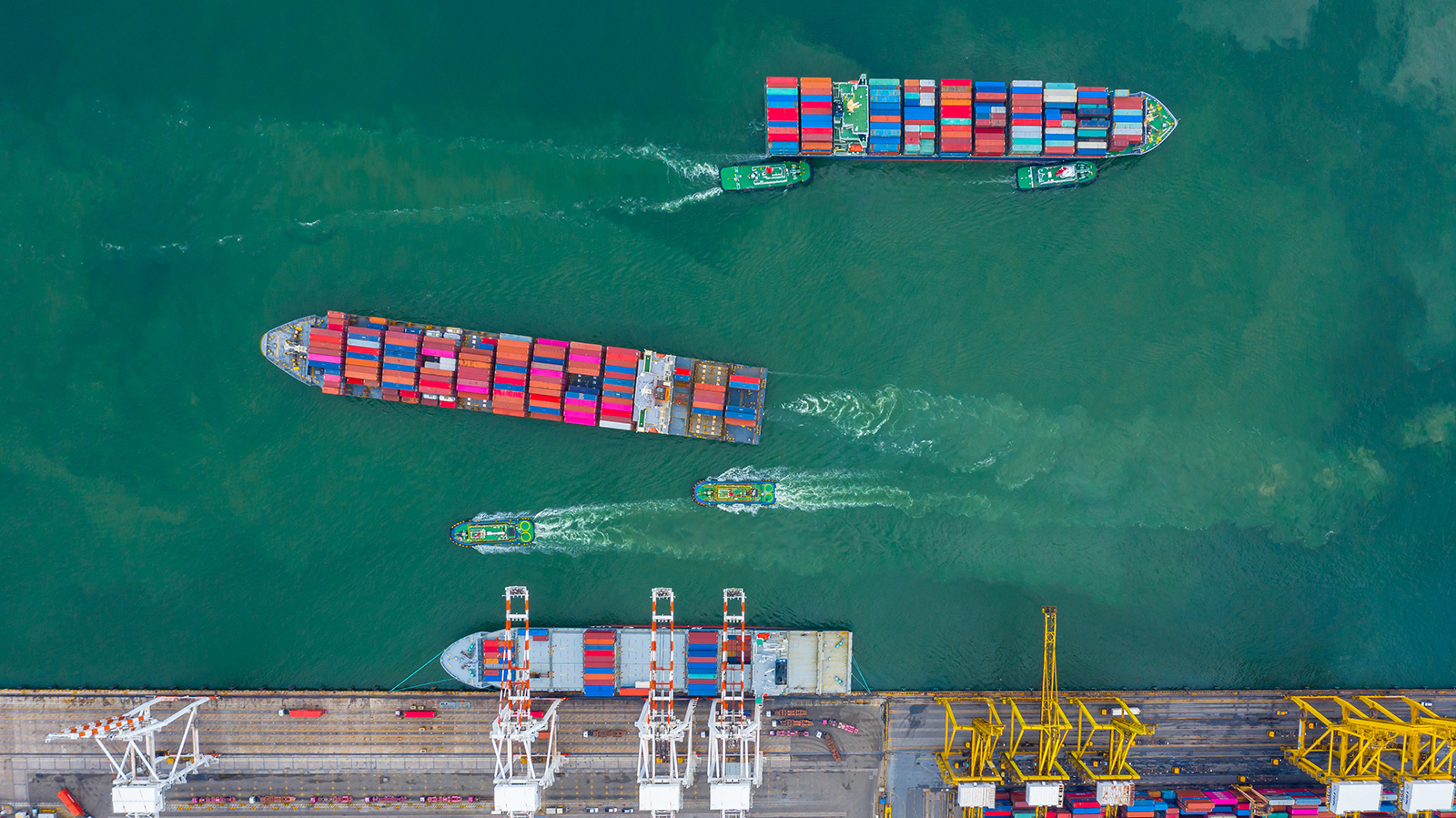Emissions from the maritime shipping sector are a major contributor to climate change, air pollution in port communities, and degradation of ocean health. Representing 3% of global emissions, the maritime shipping sector emits close to 1 billion tonnes of greenhouse gases a year, equivalent to the emissions of a G7 country like Germany or Japan. Left unchecked, these emissions are on track to increase up to 130% from 2008 levels by 2050, threatening our ability to reach the climate goals of the Paris Agreement.

Photo: iStock/avigatorphotographer
Our Shared Seas collaborated with the Aspen Institute and Global Maritime Forum to prepare a report—Accelerating a Zero-Emission Transition in Maritime Shipping: The Solutions Landscape and Opportunities for Philanthropy—as an informational resource for anyone looking to better understand the current state of play in this sector’s decarbonization. The report begins with an orientation to the shipping sector’s role as a driver of climate change. It then transitions into the solution sets in this space. Finally, it concludes with investable opportunities for accelerating a zero-emission transition in shipping, with a focus on philanthropy’s unique role as a catalyst.
Citation:
Goelz, T,. et al. 2023. “Accelerating a Zero-Emission Transition in Maritime Shipping: The Solutions Landscape and Opportunities for Philanthropy.” Aspen Institute, Global Maritime Forum, and Our Shared Seas.
Key Findings
- Action is needed this decade to ensure shipping can align with a 1.5°C Paris Agreement-aligned trajectory and fully decarbonize no later than 2050, given that maritime infrastructure and other capital investments are long lived. (E.g., Large container ships have a lifespan of up to 30 years.)
- Maritime shipping is regulated at the global level, unlike many other global industries whose governance is fragmented. Action by the International Maritime Organization, a body of the United Nations, provides a unique opportunity for a comprehensive approach to the sector’s decarbonization.
- Maritime shipping is a global industry that needs global solutions to decarbonize (e.g., global regulation, fuel readiness at scale), but opportunities also exist for significant decarbonization leadership and innovation at national, regional, and port levels.
- Green maritime shipping corridors are an avenue for coordinating across stakeholder groups in specific high-potential geographies to align incentives, test-drive new technologies, target investments, and build public-private partnerships.
- Advancing the scale, pace, and inclusivity of the maritime sector’s transition to zero emissions will result in tangible climate benefits and enhance both ocean and human health more broadly.
Maritime shipping decarbonization has emerged as a compelling opportunity for funders interested in making an impact on a range of topics, from climate change to ocean health to transportation sustainability. While new funders are entering this space and providing greater support for shipping decarbonization, there is still significant need and a tremendous opportunity for philanthropy to support shipping decarbonization solutions to protect ocean health, mitigate the impacts of climate change, and limit air pollution that impacts vulnerable communities and ecosystem health. A key feature of this report includes a compilation of actionable opportunities for funders to accelerate the zero-emission transition in maritime shipping.
Dive into the report to learn more about fundable near-term and long-term opportunities to ensure decarbonization of the sector by 2050.
